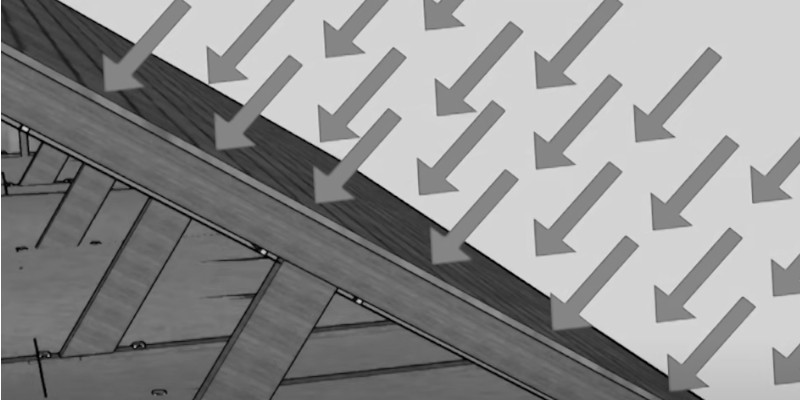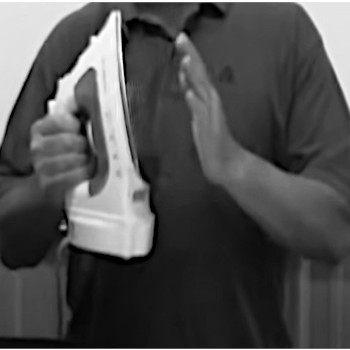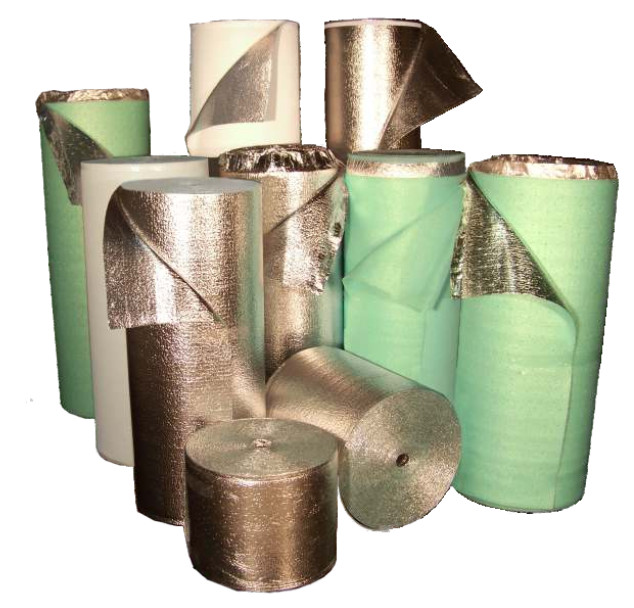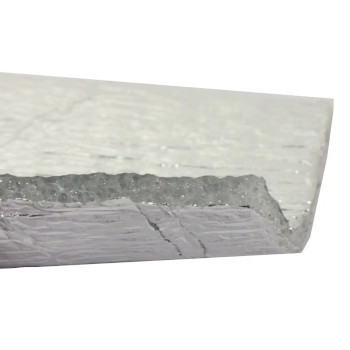
Low-E™ Foil Insulation
Reflects 97% of Radiant Heat.
Find Out Why*
Conventional insulations do their best to slow down the heat transfer. However, it has limited ability to reflect radiant energy. Low-E™ Reflective Foil Insulation works slightly differently.
While standard insulation act like a battery, storing heat, then re-radiating it, Low-E™ Foil Insulation blocks energy transfer. Simple as that.
Reflective foil insulation is one of the best 'do it yourself' projects you can do to make your home more comfortable and energy efficient.
Our goal is that after you read this article, you will want to share this information with your friends and neighbors to help them too.
We will briefly explain why reflective foil radiant barrier is a good product and worth to use in homes with mixed UK climates.
We also going to explain something that most people don't fully understand- that is exactly HOW a radiant barrier mechanics will keep your home more comfortable when it gets colder and temperature drops.
What is radiant heat and how it works?
To fully understand reflective foil insulation it is crucial to understand how radiant barrier works.

Radiant barrier diagram
Picture credit:atticfoil.com
As per above picture, in summer, the sun emits radiant heat, radiant heat travels at the speed of light until it's absorbed by your roof. Then, that roof radiates heat across the attic.
Radiant heat is heat transferred by non-contact. Basically, heat from one object transferring to another object without the two ever touching.
Here is the example:

Man holding his hand close to hot iron
Picture credit:atticfoil.com
If you put your hand a couple inches away from a hot iron, eventually your hand is going to get hot without the two ever touching. This is Radiant Heat.
Anything that gets hot will emit radiant heat.
Different products absorb or reflect heat at different rates. This is called the Reflectivity of a Product.
The higher the reflectivity, the less radiant heat it will absorb. This is exactly how Low-E™ reflective foil works.
When you install reflective foil insulation, essentially the object will stay cooler. The radiant heat is going to be reflected back. When you do that, the top surface temperature is going to be close to outside temp.
What is Low-E™ insulation?
Low-E is a new type of insulating product that allows you to create a much more comfortable and energy-efficient structure in existing or new buildings.

Low-E products
Picture credit: Low-E install guide
The way Low-E™ works is instead of slowing down heat transfer, the way traditional insulation does, reflective foil insulation block 97% energy transfer in and out of the structure.
More importantly, Low-E insulation does it with just 5.5mm of material.
This clean, recycled lightweight material allows us to create high R-values as well maintain much cooler and warmer temperatures depending on your season inside your structure.
How is Low-E™ made of?
The materials that Low-E™ insulation is made of is a 80% recycled foam polyethylene core and an aluminum facings.

Low-e core
Picture credit:Low-E
Why Polyethylene?
Polyethylene core will not absorb moisture, is very flexible and extremely strong and the foam core maintains its integrity when punctured by fasteners. Also, the closed-cell polyethylene foam acts as a thermal brake, moisture barrier and sound deadener.
The core provides a thermal break to reduce and stop conduction and convection.
With its non toxic closed cell foam core, Low-E Reflective Insulation offers a safer, cleaner, fibre-free, non-asthmatic medium and is ideal for health sensitive applications.
Why an Aluminum?
An aluminum is the best reflector. Pure aluminum has reflectivity rating of 97% so it reflects virtually all the radiant heat. Only silver and gold reflects more, at 98% and 99%.
Low-E™ Insulation is produced using a patented production method with added 99.4% pure aluminum facings. This is why it achieves better values in smaller spaces than other materials.
What makes Low-E™ product so good? 4 Arguments
1.Low-E™ it is superior in quality. The key is the 99.4% polished aluminum facings on the product.
Low-E™ stops 97% of radiant energy that it encounters from passing through the product.
Low-E™ helps prevent radiant energy, which accounts for between 60% and 93% of heat gain/loss in/out of a home.
It acts as a reflective radiant barrier to deflect heat from away from the living space.
2.It also acts as a very good vapour barrier and reduces condensation.
3.Low-E™ material serve us a good insulator because of its design which has small air pockets.
4.Low-E™ Reflective Insulation is more efficient and occupies less space than other insulation materials.
What are main differences between Low-E™ and traditional insulation?
Standard fill insulation works by slowing down heat transfer. It eventually gets saturated and starts to reradiating that heat into your building.
Unlike common insulation in order to work they need to absorb the heat, Low-E™ foil insulation blocks almost entire heat.
Then temperature difference translates into a huge amount of energy savings for your heating and cooling costs. More importantly, it creates a more comfortable environment for you.
TIP
Reflective insulation it is not supposed to replace all other insulation materials. It is designed to compliant an insulation system and to address issues which are not addressed by traditional insulation (Radiant heat, Air-tightness, Moisture control)
It is designed to reduce life cycle running costs, provide moisture protection, stops draughts, deaden sound but most importantly, to tackle issues which are usually left unaddressed by traditional bulkier insulation products.
How good is Low-E™ in terms of savings?
By allowing ONLY 3% of radiant energy to pass through, you will see noticeable savings on your next heating and cooling bills.
Low-E allows you to upgrade the efficiency of your home at very little cost to you. This material is an accessible and perfect solution to get you on the track to more energy efficient and comfortable home.
Where Low-E™ can be installed?
Low-E™ Reflective Foil Insulation can be installed as an exterior home wrap around outside of a new building.
It can also be retrofitted into interior wall, into rafter system inside or new roof structure.
In retrofit applications Low-E TAP comes cut in 2 widths 416mm and 625mm for your rafter system in your home. It comes with the tab folded in so it's ready to fit into your walls and your structure.
It can be used alone or in conjunction with mass insulations for high r-systems.
What is the R-value of Low-E™ Insulation?
Foil insulation achieves an R-value in two ways. The first is through the resistance of the core of the material.
Second is through the air layer adjacent to the foil surface. Low-E insulation does have tested "R" values but more importantly, its aluminum surfaces have an emissivity of 0.03, which equates to 97% of radiant heat being stopped and reflected back to its source.
TIP
The R-value of ANY reflective foil insulation will change depending on the size and orientation of the airspace beside the foil surface.
How good is Reflective Foil Insulation in terms of acoustic performance?
Reflective foil insulation will help deaden sound up to 50 percent under.
Bibliography
1. low-e.co.uk, “How does Low-E Insulation compare?”accessed May 5, 2022
https://low-e.co.uk/blog/how-does-low-e-compare/
2. youtube.com “Improving R-value with Radiant Barrier Over Insulation” October 25, 2014, accessed May 5, 2022
https://www.youtube.com/watch?v=qm-N2JEsQMc
*All the information provided in the content published on Insulationgo blog is for informational and educational purposes only. Insulationgo LTD makes every effort to ensure the accuracy and timeliness of the content, but we do not assume any responsibility for any errors or omissions.
The information presented on this blog should not be considered as professional advice or a substitute for consulting relevant experts. Before making any purchase decisions or taking action based on the information presented here, it is strongly recommended to contact the product manufacturer directly to verify the details and ensure its suitability for your specific needs.
By using this blog, you acknowledge and agree that Insulationgo LTD shall not be held liable for any damages, losses, or inconveniences arising from the use or reliance on the information provided herein. This limitation of liability applies to all users of the blog, including but not limited to visitors, readers, and subscribers.










































































































